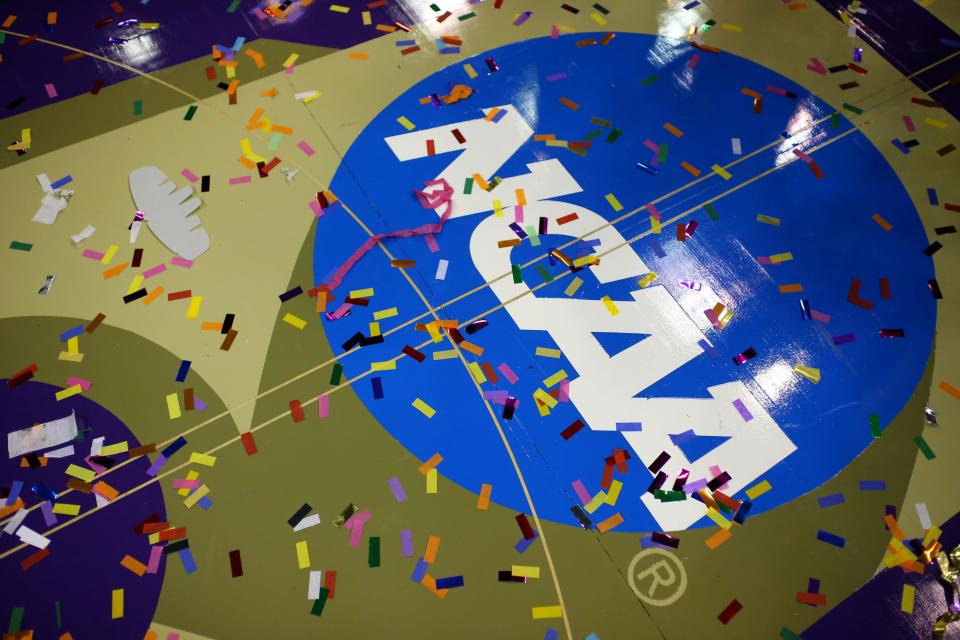College sports need rescuing from the transfer portal. I am here to help | Rob Oller
The other day I gave readers and social media followers a chance to sound off on one thing they would change in sports.
You weighed in on everything from playing the Super Bowl on Saturday to eliminating instant replay. From banning parents who berate umpires and referees to eliminating TV blackout rules.
Now it’s my turn.
I’m tackling the college transfer portal, and by extension name, image and likeness (NIL), because the two are so closely linked. And not always for the good.
Before digging in, I reaffirm my belief that the portal and NIL are both improvements over the outdated notion that college athletes only should be seen and not heard. The NCAA, school athletic departments and university bank accounts for too long benefited off the backs of athletes – mostly in football and basketball – by filling their coffers with cash while the “student-athletes” supplied the labor.
Transfer portal: NCAA transfer portal is fair, just — and completely out of control | Opinion
The portal, powered by the relatively new one-time transfer rule that grants immediate eligibility, gives athletes some control over their destinies and better protects them from spiteful coaches who try to block transfers to specific schools.

NIL enables athletes to profit off their identity and personality. Beyond receiving scholarships, athletes can benefit financially and materially by providing services for pay, whether that means receiving $1 million to endorse an energy drink or $500 to help run a summer camp.
Ohio State football: 'If the fit's right, then we’ll do it': Buckeyes to stay selective with transfer portal
Ohio State football: What led kicker Parker Lewis to transfer from USC
Ohio State athletics: 'It's the Wild, Wild West.' Buckeyes AD Gene Smith concerned about NIL abuses, NCAA issues
On that note, NIL needs to stick to the original plan, in which individuals get paid for services rendered, not collectively (eg. the entire offensive line) just for being on the team. I also would prohibit NIL payments until a recruit is enrolled and attending classes.
But enough on NIL. There will be plenty more opportunity to nitpick it to death as its tentacles stretch into unexpected income streams and the loopholes get filled by ego-driven boosters. My focus is on the transfer portal.
The proposed changes come with one foundational non-negotiable: College sports are still amateur events, which means academics matter and a clear line should exist between college and professional competition. I don’t want college football and basketball to become even more of a minor league for the NFL and NBA. If the only distinctions between amateur and professional football and basketball are the marching band halftime show and a crazy student section, then it's time to fold the tent.
College athletes are students, not free-agent adults. Call me old-school progressive, but even as I endorse increased financial opportunities for college athletes there should be rules separating pro and amateur.
And with that, my plan for improving the transfer system and keeping college sports from becoming the Wild West:
• Eliminate immediate eligibility, except in cases of extreme mental health issues or family tragedy, in which case athletes can petition to leave one school and play immediately at another.
Ohio State athletics: School to begin paying academic bonuses to athletes this fall
Sitting out a year upon transferring, which was the case prior to the 2021 rule change, serves several purposes. First, it discourages transferring, which is good. Not only is the grass not always greener, but too often a cliff awaits on the other side of the fence. When taking the total number of college transfers into consideration — more than 2,000 entered the portal in FBS in 2021-22 — only 49% of Division I athletes are actually finding a new school to play for, while 43% are still looking or have transferred to a non-NCAA school or have left their sport, and 7% withdrew from the portal, according to the NCAA transfer dashboard.
Sitting out a year after transferring would help guard against athletes making knee-jerk emotional decisions. It also allows them to adjust to campus life, both academically and culturally, at their new school. (Graduate transfers, who have proved their academic ability, deserve immediate eligibility.)
Bringing back the one-year sit-out rule also would deter schools from poaching players. If the goal is to win now, then having to wait a season for a transfer to become eligible may not be worth the effort of pursuing the athlete.
My progressive side balances the sit-out rule by adding one season of eligibility to the back end of an athlete’s career, and making an exception for coaching changes. Graduate within four years, and an athlete is entitled to get the lost season back. That way, the transfer can still redshirt and have four seasons of eligibility.
• Designate shorter transfer windows twice a year, open for no longer than a month immediately following the season and again in late spring. No more of this entering the portal whenever an athlete feels like. Structure is good when it prevents chaos.
• Create week-long windows when athletes can transfer and play immediately if a head coach gets fired. This should make the school think twice before terminating its coach prematurely. The window also allows the school time to convince players it is in their best interest to stay. If a coach leaves for another job, he cannot tamper with players on the roster of the school he left.
That’s it, the one thing I would change in college football. Make transferring less appealing, but not overly punitive. Leave true free agency to the NFL.
Get more Ohio State football news by listening to our podcasts
This article originally appeared on The Columbus Dispatch: NIL, NCAA transfer portal and how to fix college athletics

